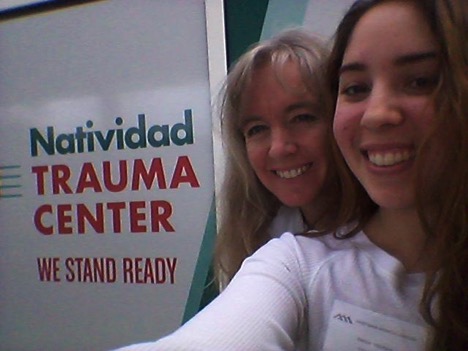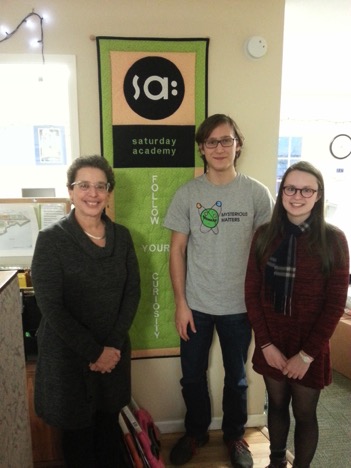Tags
"ses"
California Emergency Physicians with Dr. Ruth L. Selvidge: Karla Velarde, Winter Shadow 2016

This January I shadowed Dr. Ruth Selvidge, an Emergency Department (ED) physician at Natividad Medical Center (NMC) for a week. NMC is a Level II trauma center and it is located in Salinas, California. The ED at NMC consists of a triage area at the front where patients are first reviewed by physician assistants and nurses. Based on this first examination, the patients are either discharged or they are sent to the back of the ED for further examination by the ED doctors. This is where Ruth steps in. Her job consists of examining these critically ill patients and determining the proper treatment. Ruth is usually accompanied by one or two ED doctors during her shifts, but there are some instances where she is running the ED by herself. She has 23 years of experience and was recently assigned as the temporary Assistant Director of the ED.
During this externship I shadowed Dr. Selvidge and discussed the cases with her. I learned about filing charts, illnesses and diseases, the scribe program at NMC, residency programs, and what a day looks like for an ED doctor. I learned a lot because Ruth always took the time to review the cases and explain their differential diagnoses. I observed interesting cases because, as Ruth put it, I brought a “black cloud” to the ED since every time I stepped in there were more trauma cases than usual: car accidents, gunshot wounds, stab wounds, among others.
Ruth informed me that the hardest part of her job is the humanitarian aspect. She explained that recently doctors are in front of a computer far more than with patients, due to the way information is archived.
Continue reading California Emergency Physicians with Dr. Ruth L. Selvidge: Karla Velarde, Winter Shadow 2016
Saturday Academy: Hadley McCammon, Winter Shadow 2016

In my first email conversation with Dr. Jeri Janowsky, my winter shadow sponsor, she sent me an article explaining how the education gap between high socioeconomic status (SES) children and low SES children grows in the summer time but stays constant during the school year (Beth M. Miller, 2007). The article explained that this phenomenon is largely a due to the fact that high SES students usually have the opportunity to enroll in enriching summer camps, while low SES students do not.
Saturday Academy aims to bridge this gap by offering classes on Saturdays and over the summer to students of all income levels. This January, I had the opportunity to work for Saturday Academy in Portland for two weeks. I was struck by the non-profit's dedication to a single mission: to level the playing field for all students. As a result, I learned the importance of having a strong mission for non-profits. During a staff meeting I attended while at Saturday Academy, Jeri continuously pushed her staff to share any news they had on their projects, but more importantly, to make sure they understood how everything they were doing fit into the overall mission of Saturday Academy.
Over the course of the two weeks I spent working and learning at Saturday Academy, I also learned how non-profits function successfully. The role of the non-profit is to collect, organize, and distribute the resources of the community in order to accomplish a specific goal. In the case of Saturday Academy, bettering the education of the community’s children. Saturday Academy collects grants and the expertise of community members who instruct their classes, organizes them and provides them with guidance, and then distributes them to the community by way of classes.
Continue reading Saturday Academy: Hadley McCammon, Winter Shadow 2016
